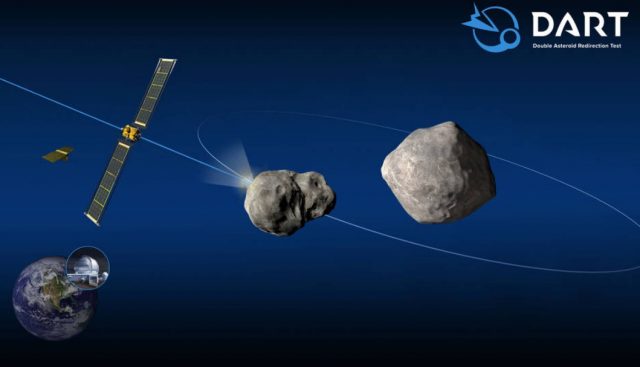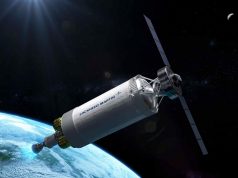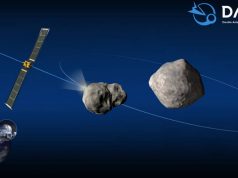NASA’s idea of saving planet Earth from an asteroid impact by crashing an uncrewed spacecraft into it is being put to test on Monday.
Dubbed the Double Asteroid Redirection Test (DART), this will be the world’s first planetary defense test mission.
According to the agency, the spacecraft impacted the small moonlet asteroid Dimorphos, which orbits a larger companion asteroid called Didymos, at 23:14 UTC, with the aim of changing its orbit.
The video of the event can be watched here:
The DART spacecraft launched in November 2021, aboard a SpaceX Falcon 9 rocket from Vandenberg Air Force Base, California. After over a year of cruise, it is set to intercept Didymos’ moonlet, at a time when the Didymos system is within 11 million kilometers of Earth. This will enable observations by ground-based telescopes and planetary radar to measure the change in momentum imparted to the moonlet.
DART will collide with the moonlet at a speed of approximately 6.6 km/s, with the aid of an onboard camera (named DRACO) and sophisticated autonomous navigation software.
The collision is expected to change the speed of the moonlet in its orbit around the main body by a fraction of one percent, but this will change the orbital period of the moonlet by several minutes – enough to be observed and measured using telescopes on Earth.
DART’s sole instrument, the Didymos Reconnaissance and Asteroid Camera for Optical navigation (DRACO), together with a sophisticated guidance, navigation and control system that works in tandem with Small-body Maneuvering Autonomous Real Time Navigation (SMART Nav) algorithms, enabled DART to identify and distinguish between the two asteroids, targeting the smaller body.
These systems guided the 1,260-pound (570-kilogram) box-shaped spacecraft through the final 56,000 miles (90,000 kilometers) of space into Dimorphos, intentionally crashing into it at roughly 14,000 miles (22,530 kilometers) per hour to slightly slow the asteroid’s orbital speed. DRACO’s final images, obtained by the spacecraft seconds before impact, revealed the surface of Dimorphos in close-up detail.
As explained by Lindley Johnson, NASA’s Planetary Defense Officer, DART is the first demonstration of the ‘kinetic impactor’ technique in which a spacecraft deliberately collides with a known asteroid at high speed to change the asteroid’s motion in space. This technique is thought to be the most technologically mature approach for mitigating a potentially hazardous asteroid.
As a part of NASA’s overall planetary defense strategy, DART’s impact with the asteroid Dimorphos demonstrates a viable mitigation technique for protecting the planet from an Earth-bound asteroid or comet, if one were discovered.
“At its core, DART represents an unprecedented success for planetary defense, but it is also a mission of unity with a real benefit for all humanity,” said NASA Administrator Bill Nelson. “As NASA studies the cosmos and our home planet, we’re also working to protect that home, and this international collaboration turned science fiction into science fact, demonstrating one way to protect Earth.”
Roughly four years from now, the European Space Agency’s Hera project will conduct detailed surveys of both Dimorphos and Didymos, with a particular focus on the crater left by DART’s collision and a precise measurement of Dimorphos’ mass.



























